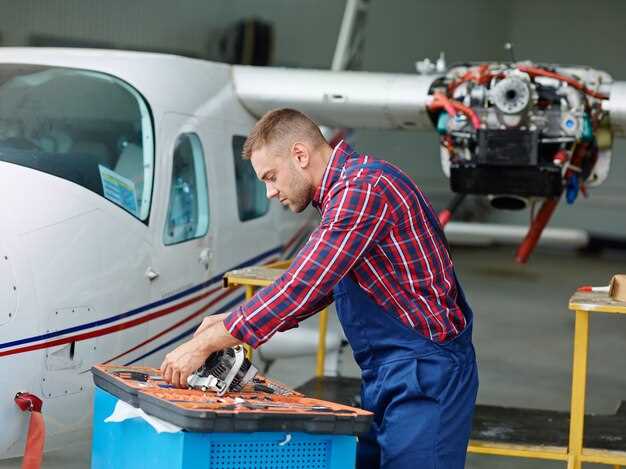How to service an outboard motor

For boat owners, proper maintenance of an outboard motor is crucial to ensure optimal engine performance and longevity. An outboard motor serves as the heart of many small watercraft, providing the power necessary for travel and recreational activities. Regular servicing not only enhances efficiency but also prevents costly repairs down the line.
This guide aims to equip boat owners with essential knowledge and practical steps for effectively servicing their outboard engines. From routine checks to comprehensive overhauls, understanding the intricacies of your motor can significantly impact safety and enjoyment on the water. Whether you are a seasoned boater or a newcomer to the maritime world, maintaining your outboard motor will ensure you are ready for any adventure at sea.
In the following sections, we will delve into various aspects of outboard motor maintenance, including the importance of regular inspections, common issues that may arise, and detailed instructions for performing key servicing tasks. By following these guidelines, you’ll keep your engine running smoothly and enhance your overall boating experience.
Checking and Replacing the Fuel Filter

Regular maintenance of your outboard motor includes checking and replacing the fuel filter. This component plays a crucial role in ensuring that the engine receives clean fuel, preventing dirt, debris, and water from entering the fuel system. A clogged or dirty fuel filter can lead to performance issues, including reduced power and increased fuel consumption.
To check the fuel filter, start by turning off the engine and ensuring the outboard is in a safe position. Locate the fuel filter, which is typically found between the fuel tank and the engine. Carefully inspect the filter for any signs of dirt or discoloration. If the filter appears dirty or has accumulated debris, it is time for a replacement.
When replacing the fuel filter, ensure you have the correct filter model specified in your outboard motor’s manual. Begin by disconnecting the fuel lines. Be cautious, as fuel may spill; it’s advisable to use a rag to catch any leaks. Once the fuel lines are detached, remove the old filter and install the new one, ensuring that it is positioned in the correct flow direction.
Reconnect the fuel lines securely, and check for any leaks before starting the engine. It’s a good habit to check the fuel filter regularly, especially if you notice a drop in performance or if you are using older fuel. A proactive approach to maintenance will help extend the life of your outboard motor and enhance reliability on the water.
Changing the Gear Lube: A Step-by-Step Process
Regular maintenance of your outboard motor is essential for optimal performance, and changing the gear lube is a critical part of that process. Follow these steps to ensure you complete this task efficiently and correctly.
Step 1: Gather Your Tools and Materials
Before you start, make sure you have all necessary tools at hand. You will need a gear lube pump, a wrench or socket set, a container for old lube, fresh gear lubricant as specified by your outboard motor’s manual, and a cleaning cloth.
Step 2: Prepare the Outboard Motor
Ensure that the outboard motor is securely mounted on the boat or a stand. It should be in a vertical position to facilitate drainage. Make sure the engine is turned off and cool before you begin.
Step 3: Locate the Gear Lube Screws
Identify the gear lube drain and vent screws on the lower unit of your outboard motor. The drain screw is usually located at the bottom, while the vent screw is typically higher up. Check your owner’s manual if you have trouble finding them.
Step 4: Drain the Old Gear Lube
Using a wrench, loosen the drain screw first and allow the old gear lube to completely drain into the container. This may take several minutes. Once drained, remove the vent screw to prevent vacuum formation, ensuring all lube escapes.
Step 5: Inspect the Old Gear Lube
Examine the old gear lube for metal shavings or discoloration. Presence of these indicators may signal underlying issues within the outboard motor’s gearbox. If you notice any anomalies, consult a professional technician.
Step 6: Replace the Drain and Vent Screws
Once the old lube has fully drained, clean the threads of the drain and vent screws. Reinstall the drain screw, tightening it securely but without over-tightening. Then, replace the vent screw.
Step 7: Fill with New Gear Lube
Use the gear lube pump to fill the lower unit with the new lubricant. Insert the pump hose into the vent screw hole and pump until fluid begins to ooze out of the drain hole. This indicates that the unit is full. Replace the vent screw after filling.
Step 8: Clean Up
Wipe away any excess lubricant around the screws. Dispose of the old gear lube in accordance with local regulations. Clean your tools and store them properly for future use.
Step 9: Perform a Function Check
Finally, start the outboard motor and let it run for a few minutes. Check for leaks around the screws and ensure the motor operates smoothly. If everything looks good, your gear lube change is complete.
By following these steps, you can ensure your outboard motor remains in top condition, prolonging its life and enhancing your boating experience.
Inspecting and Maintaining the Cooling System

The cooling system of your outboard motor is crucial for optimal performance and longevity. Regular maintenance ensures that the engine remains at the proper operating temperature, preventing overheating and potential damage.
Start by checking the water intake for any debris or obstructions. Clear passages allow for adequate water flow, which is essential for effective cooling. Inspect the water pump impeller as well; worn or damaged impellers can reduce water circulation, leading to overheating.
Another important step is to examine the cooling passages within the engine. Use a flashlight to check for mineral buildup or corrosion, which can impede water flow. If you notice significant residue, consider using a descaling solution to clean the system. Always follow the manufacturer’s recommendations when selecting cleaning products.
Additionally, inspect the thermostat, which regulates the engine temperature. A malfunctioning thermostat can lead to unpredictable engine behavior. Test its operation by placing it in hot water to observe if it opens at the designated temperature.
Finally, ensure that the outboard motor’s cooling system is properly flushed after every use, especially in saltwater environments. Flushing with fresh water removes salt and sediment, which are harmful to the internal components. This simple maintenance task can prolong the life of your cooling system significantly.




